Walk through Lyon’s oldest streets and you’ll find traces of the Roman Empire, medieval chapels, and Renaissance courtyards. The historical places in Lyon are not sealed off from the present; they stand quietly in the middle of daily life. They were built for worship, defence, gathering, or work, and many still serve those purposes in new ways. Some tell of power, others of ordinary moments that once filled the same spaces. To understand Lyon, it helps to see where it began and what it chose to keep.
Top 10 Historical Places In Lyon
From Roman ruins to Renaissance alleys, these are the most remarkable historical places in Lyon that have shaped its identity across centuries:
1. Basilica Of Notre – Dame De Fourvière
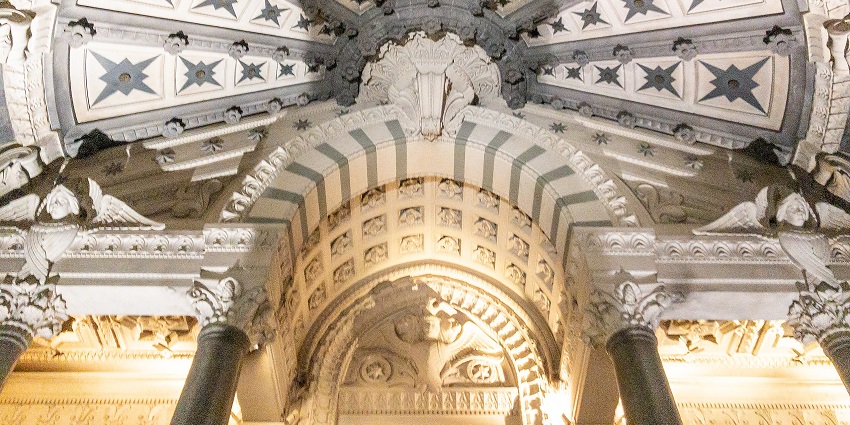
Photo: Kent Wang / Wikimedia Commons
High on Fourvière Hill, the basilica built between 1872 and 1884 came to life after Lyon was spared during the Franco-Prussian War. Its style mixes Romanesque arches with Byzantine domes, and its shape has earned it the nickname “upside-down elephant” among locals. Inside, every surface is carefully detailed. Mosaics stretch across the walls, gilded ceilings glow in the light, and coloured glass fills the space with quiet colour. Though newer than many other landmarks, it is shaped by faith and public memory. The terrace just outside offers the best views with rooftops, rivers, and distant mountains all visible from its edge.
Timings: 7 AM – 7 PM daily
Nearby Attractions: Roman Theatres of Fourvière, Esplanade viewpoint
2. Vieux Lyon (Old Lyon)
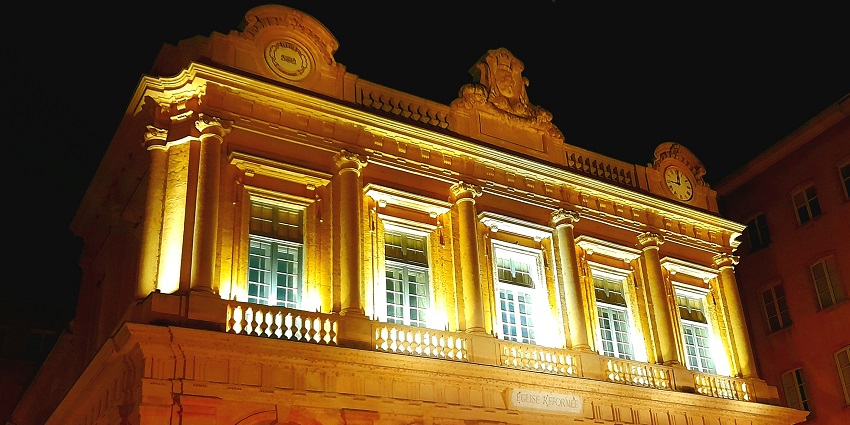
Photo: Limfjord69 / Wikimedia Commons
Vieux Lyon stretches along the western bank of the Saône, right below Fourvière Hill. It is one of the most well-preserved Renaissance districts in Europe. Its maze of cobbled lanes, hidden courtyards, and pastel-coloured buildings feels centuries away from the modern city beyond. These narrow corridors, called traboules, allowed residents to move goods through the city while staying sheltered. Every turn in Vieux Lyon opens onto a stone wall, a vaulted passage, or a carved lintel over a doorway. People live and work here, and its rhythm is steady with life.
Timings: 24*7, museums and shops have individual timings
Nearby Attractions: Lyon Cathedral, traboules, Musée Gadagne
3. Lyon Cathedral (Cathédrale Saint Jean Baptiste)
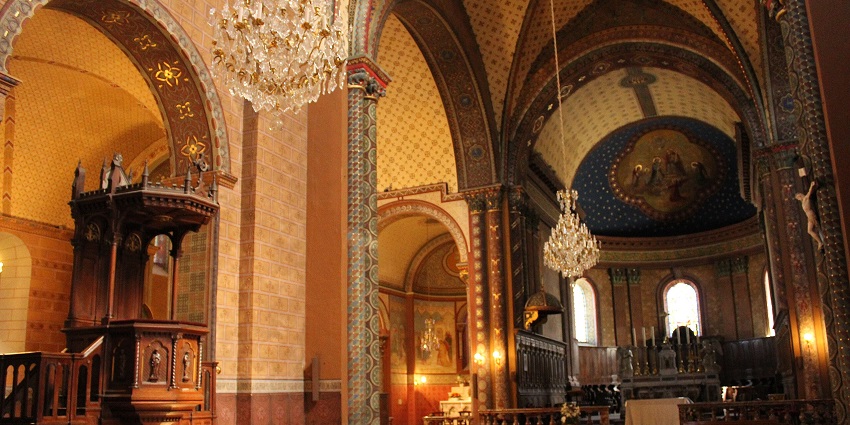
Photo: Franck-fnba / Wikimedia Commons
Tucked into the heart of Old Lyon, this cathedral has watched over the city for nearly 900 years. Its walls carry both Romanesque weight and Gothic elegance, a result of construction that stretched from the 1100s to the 1400s. Royal visits, civic moments, and quiet ceremonies all left their mark here. The 14th-century astronomical clock still works, chiming every hour with its moving figures and painted dials. Inside, carved wooden stalls and stained glass windows reflect centuries of craftsmanship and devotion. Worn stones underfoot, light shifting across old arches, and the quiet hush that holds steady through the day.
Timings: 8 AM – 7 PM
Nearby Attractions: Place Saint-Jean, archaeological garden, Old Lyon
4. Ancient Theatre Of Fourvière
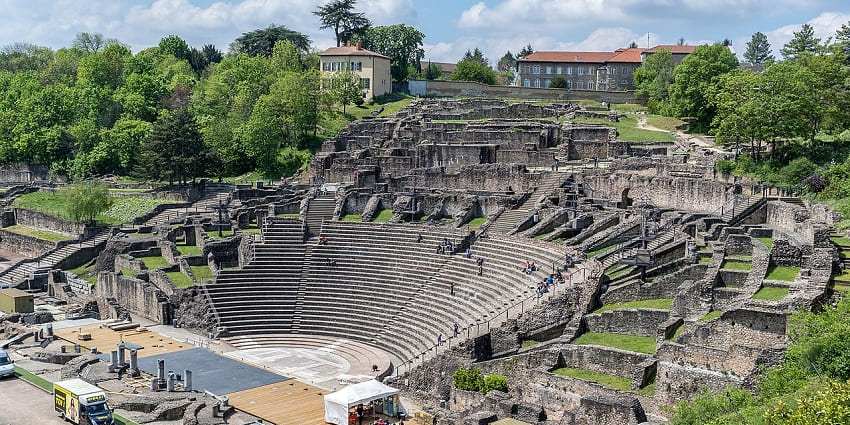
Photo: Jean-Christophe BENOIST / Wikimedia Commons / Image For Representation Only
Set into the hillside above the Saône, this Roman theatre dates back to 15 BCE and is among the oldest remnants of Lyon. Built to seat over 10,000 people, its semi-circular rows are carved directly into the slope of Fourvière Hill. The structure remains solid and public speeches, performances, and civic gatherings all took place here under open skies. The site still hosts events today, especially during the summer Nights of Fourvière festival. Few historical places in Lyon feel as timeless or as raw as this open-air monument to the city’s Roman roots.
Timings: 7 AM – 9 PM
Nearby Attractions: Gallo-Roman Museum, Fourvière Hill, basilica
5. Place Des Terreaux And Hôtel De Ville (City Hall)
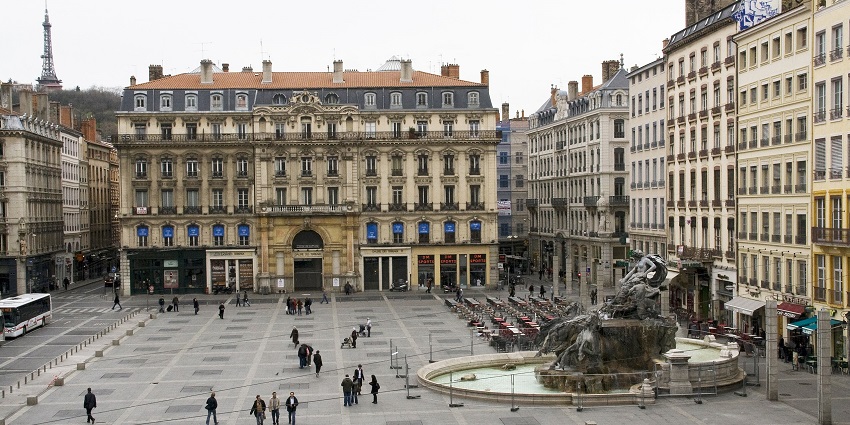
Photo: Philippe MICHAUD / Wikimedia Commons
Place des Terreaux sits at the centre of Lyon, shaped by both turmoil and civic pride. During the French Revolution, it was the site of public executions but now it is open, lived-in, and steady with daily movement. The Bartholdi Fountain draws the most attention, with powerful horses straining forward, carved in stone. On the opposite side stands the Hôtel de Ville, or City Hall, a striking 17th-century building. Its grand façade, carved with royal symbols and flanked by towers, still houses the city’s administration. Just steps away sits the Musée des Beaux-Arts, completing the square’s cultural frame.
Timings: 24*7
Nearby Attractions: Musée des Beaux-Arts, Bartholdi Fountain
6. Musée Des Beaux – Arts De Lyon
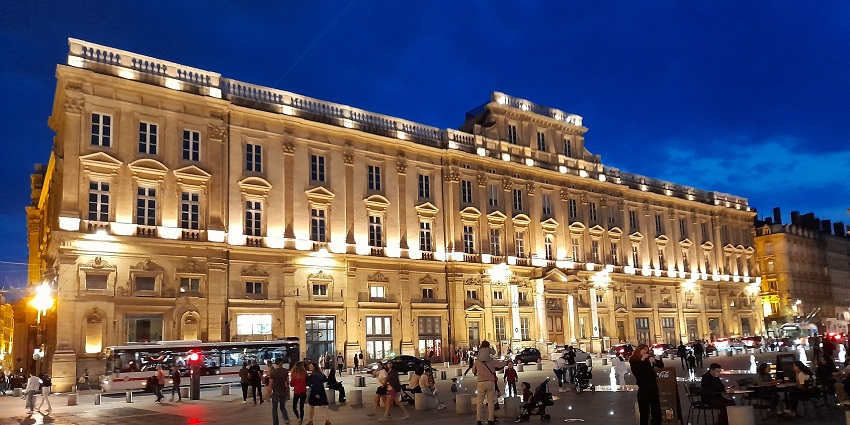
Photo: Limfjord69 / Wikimedia Commons
Set within a former Benedictine abbey from the 17th century, this museum holds one of France’s richest art collections outside Paris. Its peaceful cloister, surrounded by arcades and a central garden, gives no hint of inside paintings, sculptures, and artefacts. Rooms shift from the works of Rubens and Rembrandt to Degas, Picasso, and Monet. The museum also preserves Lyon’s legacy of religious and civic art, much of which was saved during the Revolution. Among all historical places in Lyon, this one offers both history and beauty through the works it continues to protect.
Timings: 10 AM – 6 PM (closed Tuesdays)
Nearby Attractions: City Hall, opera house, fine cafés
7. Traboules Of Lyon
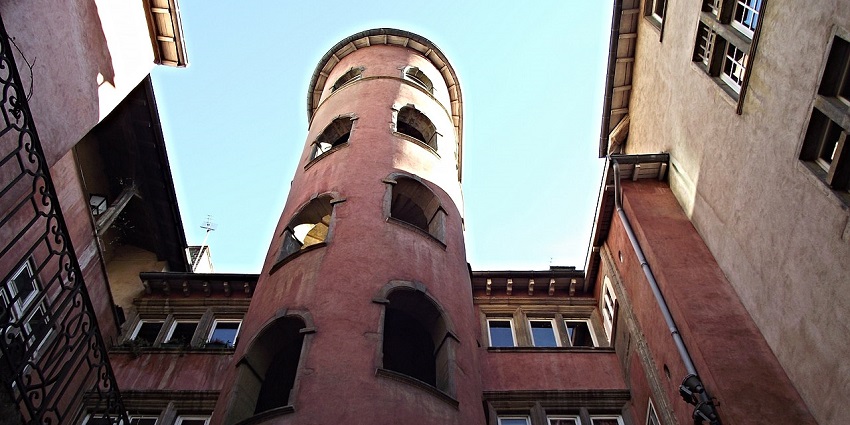
Photo: Fred Romero / Wikimedia Commons
Hidden behind ordinary doors and archways, the traboules are narrow, covered passageways that cut through buildings and courtyards. Some are simple and narrow; others open onto quiet inner courtyards with spiral staircases and sculpted balconies. Many are private, but around 40 are still accessible to the public, marked with discreet signs. The traboules are the most hidden, yet they carry the strongest sense of everyday history. Here function and beauty were built into the same stone.
Timings: Public ones are open 24*7; guided tours available
Nearby Attractions: Old Lyon, Maison des Avocats, Mur des Canuts
8. Roman Amphitheatre Of The Three Gauls

Photo: John Samuel / Wikimedia Commons
Tucked into the slopes of the Croix-Rousse, this amphitheatre was once the centre of Roman civic life in ancient Lugdunum. Built in the first century AD, it hosted speeches, ceremonies, and games. Though smaller than the Fourvière Theatre, it holds a different weight. This is where Saint Blandina and other early Christians were executed in 177 AD. Much of the original structure is gone, but the remains still shape the land with curving terraces, worn steps, and patches of stone walls. Of all historical places in Lyon, this carries a sense of solemnity, reminding spectacle and suffering in equal measure.
Timings: 9 AM – 7 PM
Nearby Attractions: Croix-Rousse district, Montée de la Grande Côte
9. Église Saint – Nizier
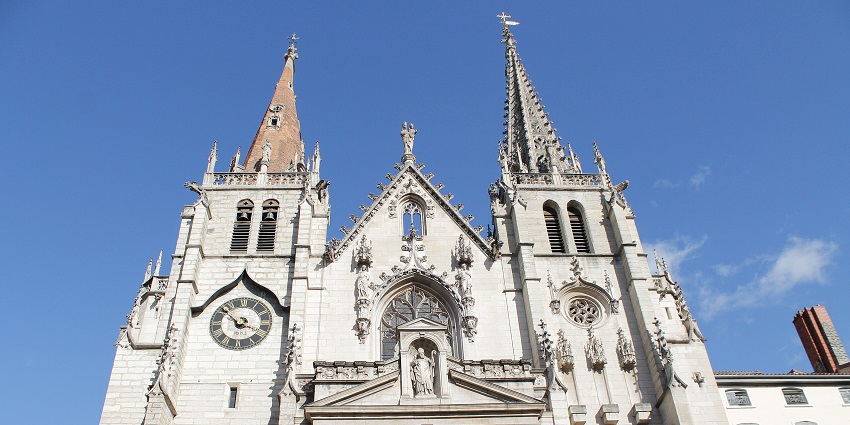
Photo: John Samuel / Wikimedia Commons
This Gothic church stands quietly at the edge of the Presqu’île, between the busy streets of shops and cafés. It was built on the site of an earlier Christian basilica, and parts of its foundation date back to the 5th century. The current structure took shape between the 14th and 16th centuries, showing a mix of styles of slender Gothic arches. One of its twin spires remains unfinished, adding a bit of asymmetry to the skyline. Inside, stained glass windows filter coloured light onto pale stone, and small chapels line the sides of the nave. It has long served local residents, with baptisms, weddings, and funerals still held here as they have been for generations.
Timings: 9 AM – 6 PM
Nearby Attractions: Rue de la République, Place des Jacobins
10. Grand Hôtel – Dieu
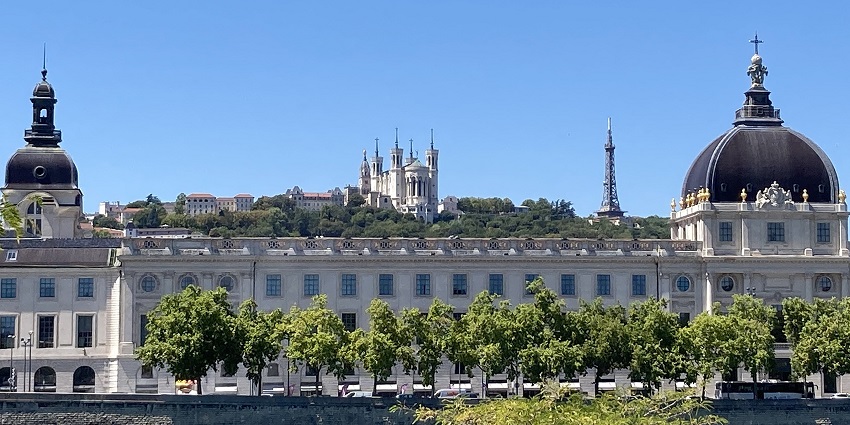
Photo: Slgrubb / Wikimedia Commons
Once one of the oldest hospitals in France, the Grand Hôtel-Dieu sits along the Rhône with a long, formal façade. It was a place of care for centuries, run by nuns and physicians who treated the city’s poor. The central dome, added by architect Jacques-Germain Soufflot, is one of Lyon’s most recognised landmarks. Today, it houses restaurants, shops, a hotel, and the Cité Internationale de la Gastronomie. The building’s layout still follows the original plan, with long halls, quiet courtyards, and chapels that recall its past. Among the many historical places in Lyon, it is one of the rare few that has shifted purpose while keeping its dignity.
Timings: 8 AM – 8 PM (varies by venue inside)
Nearby Attractions: Rhône riverbanks, Bellecour Square, Musée des Confluences
The past is not hidden in Lyon, it’s part of the city’s rhythm, rising in stone, shadow, and silence. Every site you’ve read about shaped a piece of Lyon’s character, not as a relic but as something still lived-in and real. These historical places in Lyon are part of why the city feels layered, grounded, and alive. Some stand grand on hills, others wait behind quiet doors, but each holds its place in the city’s memory. Plan with TripXL to craft an itinerary built around real history, local insight, and stories.
Cover Photo: Dennis G. Jarvis / Wikimedia Commons


 WhatsApp
WhatsApp
 Twitter
Twitter









